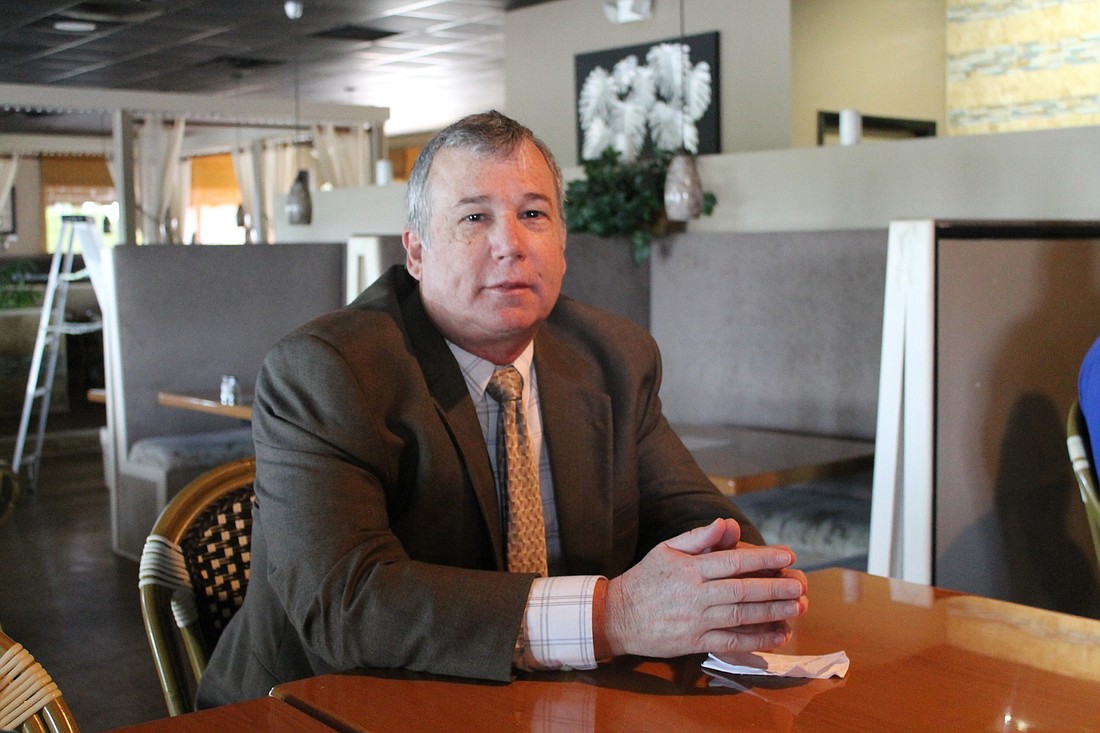
Long a bedroom community to Jacksonville, the First Coast Expressway under construction in Clay County will attract significant business development to Green Cove Springs, predicts Ed Lehman, director of the Clay County Planning and Zoning Division.
The First Coast Expressway will connect Interstate 10 in Duval County with I-95 in St. Johns County. The toll road is scheduled for completion in 2030.
For now, Lehman said residential growth is expected to continue.
The University of Florida Bureau of Economic and Business Research projects that Clay’s 2018 population of 212,034 will grow by almost 4% to 220,200 in 2020 and another 28% to 281,770 by 2040.
That growth is coming as Clay is the No. 1 commuting county in the state, Lehman said.
In 2015, 54% of the county’s residents worked outside of Clay. The 2018 “Commuting Trends in Florida” report from the Florida Department of Transportation ranked Clay with the highest average commute time in the state, at 36.3 minutes.
Lehman said that people are attracted to Clay County for its highly rated school district. Addison Davis, superintendent of schools for Clay County District Schools, said Clay County has an “A” district grade from the Florida Department of Education and ranks No. 8 in the state.
The county needs to attract high-paying jobs, encourage more people to work within the county and raise the tax base, Lehman said.
Nonresidential uses generally provide more money in taxes and have a lesser burden on some public services and facilities, such as recreation and schools. Bedroom communities alone cannot pay the cost of public services, he said.
Achieving a balanced economy has been a challenge for the county in terms of attracting jobs and the workforce to fill them, he said.
Key industries in Clay are education, health care and life sciences, aviation and defense, manufacturing, logistics and distribution, information technology, and business support services.
Funding infrastructure improvements, particularly for roadways, also is a challenge for the Clay County Commission, Lehman said.
The commission plans to add a $60 fee to property taxes to improve and maintain drainage facilities and services within the unincorporated area.
Starting Monday, the county will increase road impact fees 70% for new residential and commercial development to fund improvements.
As the road impact fees are raised, the county plans to eliminate the concurrency program of paying for a proportionate share of the cost of a transportation improvement to affected roads. All new development in the county will pay the same rate depending on use type.
To promote nonresidential development, the county plans to pay the difference out of the county’s general fund, he said.
Lehman said the county’s guide for growth, the 2040 Comprehensive Plan, was approved and his next focus is to update the land development codes.
The county has three land development codes for Clay County, the Lake Asbury Park Master Plan and the Branan Field Master Plan.
Lake Asbury and Branan Field, both in northeast Clay, were created in the mid-2000s. The First Coast Expressway will pass through those areas.
Plans for the Saratoga Springs Development of Regional Impact in Lake Asbury and the Governors Park DRI, approved in the mid-2000s, were shelved during the recession and are waiting for the completion of the First Coast Expressway to allow nonresidential development.
Governors Park can build up to 1,000 dwelling units before the expressway is built.
The first of the expressway’s three legs is complete from I-10 to Blanding Boulevard. The second leg of the expressway, under construction in Clay from Blanding Boulevard to the Shands Bridge, is anticipated to be completed by fall 2026.
The expressway is fully funded and expected to be completed by 2030.
The expressway should relieve the I-295 loop and U.S. 17 of significant truck traffic while opening the areas for more housing and employment development, Lehman said.